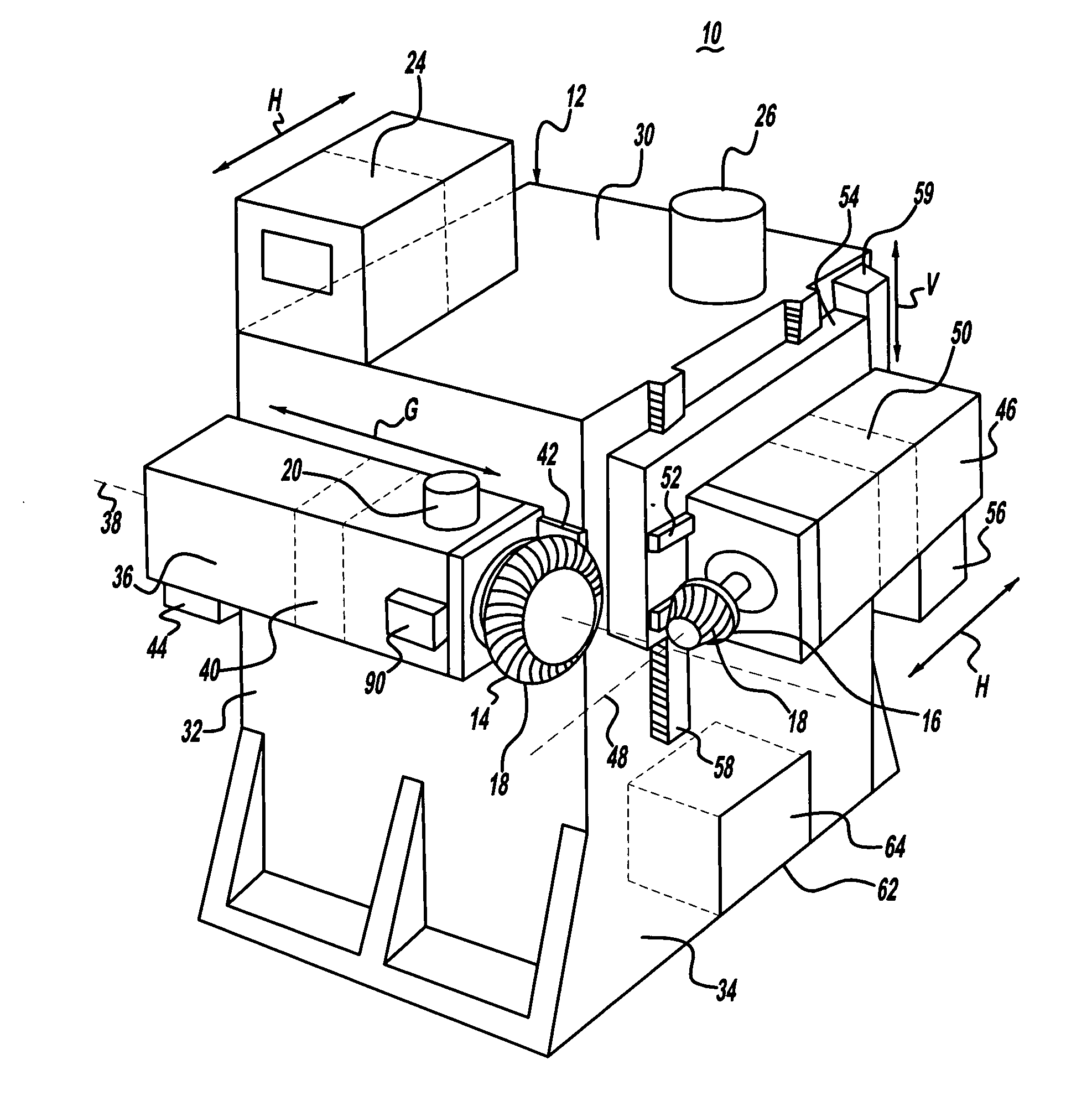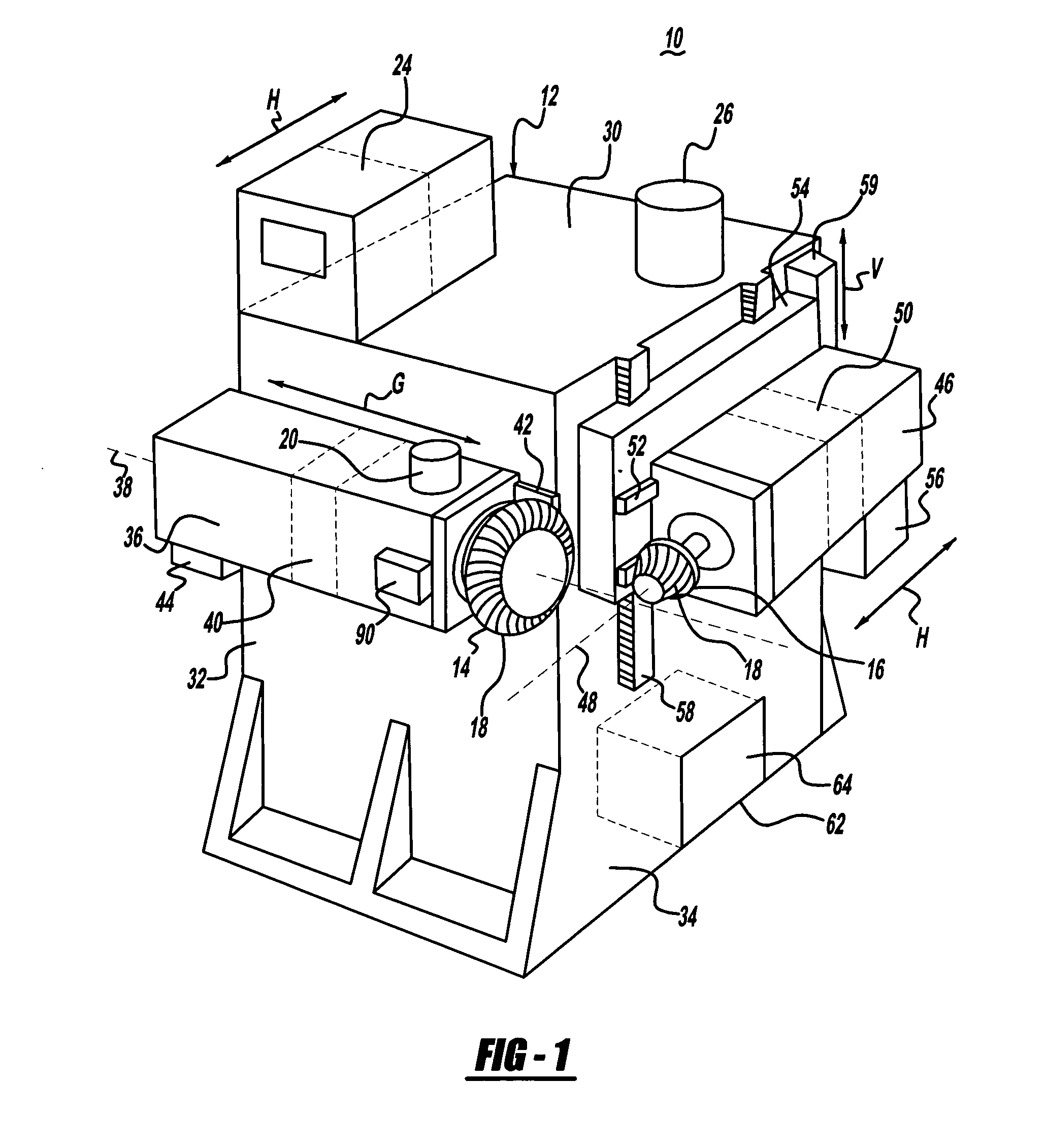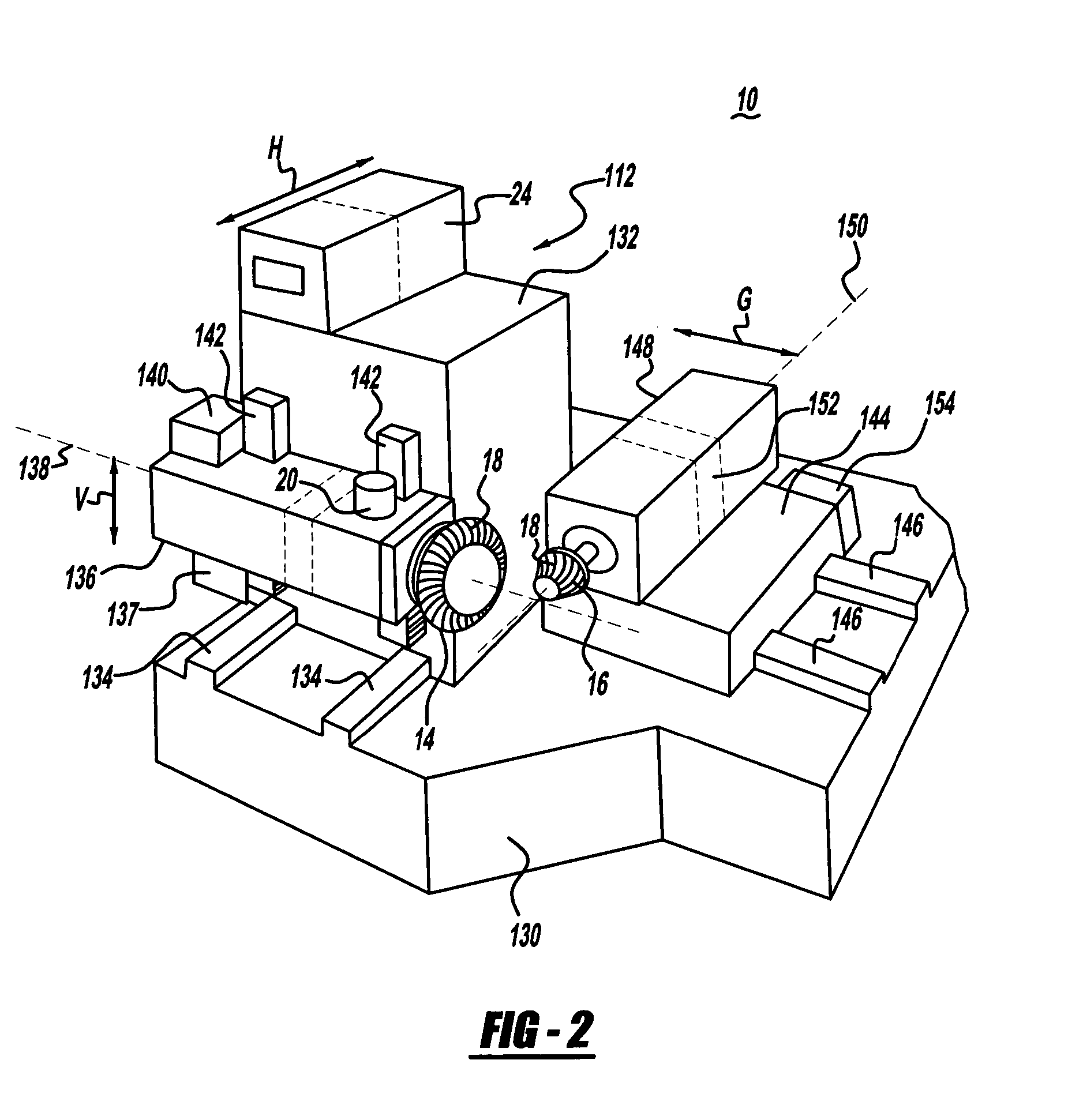Method and apparatus for lapping gears
a gear and gear tooth technology, applied in the direction of gear teeth, gear manufacturing apparatus, manufacturing tools, etc., can solve the problems of affecting the quality of the gear teeth, the process used to make and the teeth of the ring gear and pinion gear may not conform to the design specifications
- Summary
- Abstract
- Description
- Claims
- Application Information
AI Technical Summary
Benefits of technology
Problems solved by technology
Method used
Image
Examples
Embodiment Construction
[0026]FIGS. 1-3 illustrate a gear lapping system 10 of the present invention. The system 10 includes an automated lapping machine 12 that is adapted to retain the mating gears 14,16 of a gear set 18 in mesh and exercise the gear set by rotation of the gears and the use of a pinion-cone motion (and possible gear cone motion and vertical and horizontal mounting offsets) between them and that is adapted to receive control inputs from an automated controller 24. The gear set 18 includes the first gear 14, having a plurality of first gear teeth each with drive and coast gear flank surfaces, and the second gear 16, having a plurality of second gear teeth each with drive and coast gear flank surfaces. During lapping the first and second gear teeth are in mesh and are indexed so that a starting position on the gear flank surfaces may be known (currently, the lapping cycle is based on time). The system 10 further includes a vibration sensor 20 that is adapted to provide a characteristic outp...
PUM
| Property | Measurement | Unit |
|---|---|---|
| data structure | aaaaa | aaaaa |
| speed | aaaaa | aaaaa |
| torque | aaaaa | aaaaa |
Abstract
Description
Claims
Application Information
 Login to View More
Login to View More - R&D
- Intellectual Property
- Life Sciences
- Materials
- Tech Scout
- Unparalleled Data Quality
- Higher Quality Content
- 60% Fewer Hallucinations
Browse by: Latest US Patents, China's latest patents, Technical Efficacy Thesaurus, Application Domain, Technology Topic, Popular Technical Reports.
© 2025 PatSnap. All rights reserved.Legal|Privacy policy|Modern Slavery Act Transparency Statement|Sitemap|About US| Contact US: help@patsnap.com



